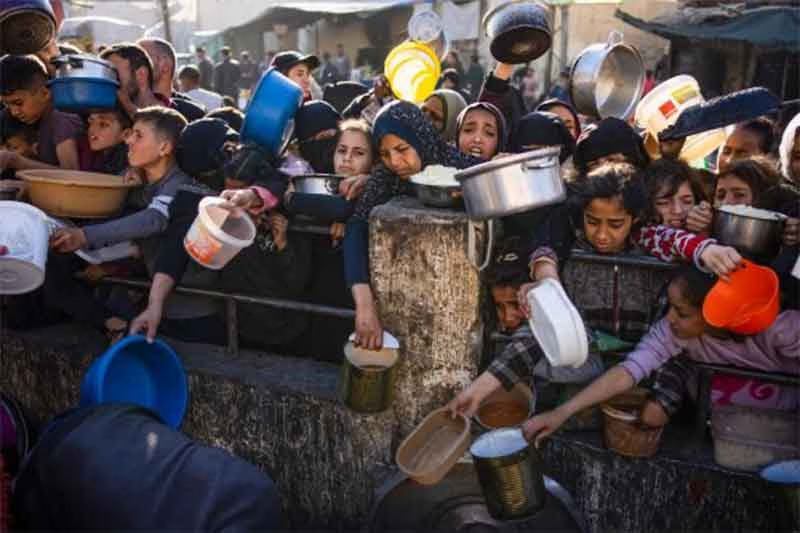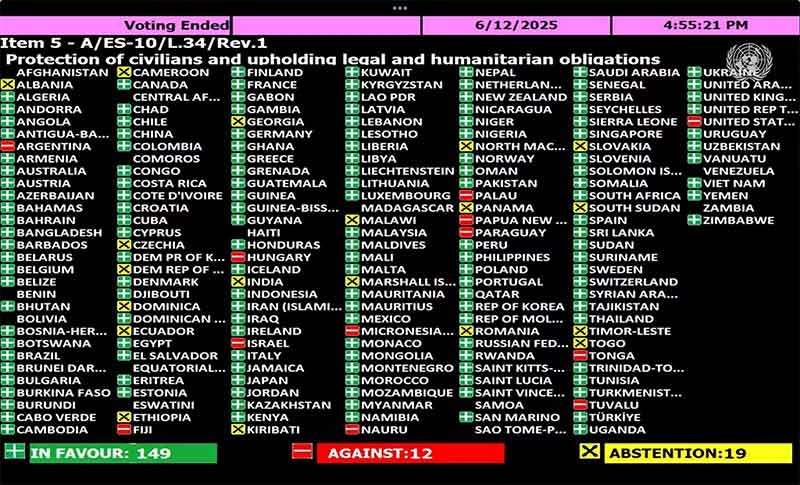
India has long been a testing ground for several western products, particularly in agriculture and medicine—making the most of loose regulations and genetic diversity of a huge population. It is done to help cut research costs dramatically for lucrative products to be sold in the West. The relationship is highly exploitative and many believe it represents a new colonialism.
Encouraging vulnerable and poor people to take risks raises ethical questions. This is really tragic because it is they, and not the outsider, who have to pay the price of failure. A painstaking reflection of such interventions needs to be demanded. New agricultural practices are being propagated with enticements of extravagant promises. By manipulating the choices of consumers at the low-income pyramid, they are being disempowered. The damage to the economy and ecology of these already fragile societies is now starkly visible. The cost of bearing the failure of these experiments can be significantly high for those who, apart from coping with harmful effects, also face the opportunity cost of setting them right.
In their book Poor Economics, development economists Esther Duflo and Abhijit Banerjee list hundreds of “common sense” development projects—crop insurance, food aid, microcredit—that either don’t help poor people or make them poorer. Many of the serious problems of farmers and the rural poor are largely a result of our misguided projects that have severely impaired the local ecology, leading to soil degradation, acute shortage of water, and resistant pests. Monsanto’s hybrid seeds are just one of many such cases. All these have been responsible for so called “afterthoughtish poverty”. Moreover such interventions encourage “social Darwinism”.
It is true that social impact and life-improving technologies –mobile phones and internet, high yielding seed varieties, modern drip irrigation, and low-cost solar-energy grids – have enormous potential to promote human well-being in ways that simply were not possible a few years ago. They provide abundant affordable products like solar lanterns, non-electric water filters, and smoke-reducing stoves, but often the greater challenge is servicing them in a systematic and scalable way. Solar lights are pretty cool little gadgets. Once charged using a small solar panel they provide a good source of light and can be used to recharge cell phones .The lights mean much more in rural villages without electrical service. They mean children can see to do their homework after dark. They are ideal substitutes for kerosene lamps which pose serious health, safety, and environmental hazards with their smoky fires.
There could be a rock-star engineer from a top university who might have invented the sexiest gadget for use in villages. However, villages don’t have ecosystems for immediate local servicing of failed products. For a rural customer, a broken product is highly when no comes to replace or help with it. The technology providers can denitrify trusted and respected people in each village, perhaps a school teacher, and persuades them to become agents. The must be given substantial training. They can learn how to help buyers set up and service the technology. .meanwhile they can also get income which renews the local economy
Jatropha cultivation was the new bandwagon wherein the Cinderella plant was promised to deliver gold out of barren lands. An entire generation of development literature proliferated with tall promises of wealth out of waste. Today it has become discredited and in areas like Chhattisgarh, there has been a huge backlash from the tribals who feel they have been cheated and their habitat has surfed damage. The loss is in terms of “ecosystem service value”—the economic value derived from agricultural products, fresh water, clean air, and fertile soils. It has also jeopardized the livelihoods of millions of tribals who depend on forests and natural resources.
A similar monumental failure of alternative energy model was the disastrous end to the National Biogas Plan of India. In what was termed a revolutionary idea that would transform India’s hinterland, huge targets were allocated for the installation of biogas plants and soft loans were doled out like hot snacks. No effort was made to train masons or create a pool of service agents to ensure proper construction and maintenance. The entire program proved to be a financial tsunami for poor villagers who were left with a legacy of unpaid loans and branded as defaulters.
The loans were written off, but in accordance with the banking norms, the borrowers were no longer entitled to any new loans as they fell into the category of defaulters. They had to pay the penalty for the over-enthusiasm of the staff of development machinery whose promotions were directly linked to the achievement of targets. The National Biogas Plan is the most glaring example of how a top-down approach can play havoc with the life of people whose lot it proposes to improve.
I remember a village called Visakha in remote Gadchiroli district where all households falling within an eponymous Gram Panchayat (comprising about 5 villages) were covered under the programme. There was a recommendation at our zonal headquarter in Nagpur that the concerned development officer should be publicly felicitated. The proposal was almost carried through when a senior officer with vast experience in grassroots programmes strongly insisted that all such recognitions must wait for two years so that a dispassionate evaluation is possible. And after two years, the ghost of National biogas plan was haunting the villages like the spectre of drought that sucked hundreds of farmers in its vortex of mass suicides.
In one of the banks in Chandrapur, hundreds of loans were written off as if a mountain of rotten potatoes was ploughed just to clean the balance sheet and get rid of the toxic assets. In chasing targets, the quality of lending was completely undermined. Working for the poor does not mean indiscriminately thrusting money down their throats. Unfortunately, the world’s largest poverty alleviatiion programme—the Integrated Rural Development Programme (IRDP) did precisely that. The abiding legacy of the programme for India’s poor has been that millions have become bank defaulters for no fault of their own. Today, they find it impossible to rejoin the formal credit sector.
A borrower who has defaulted on a loan becomes financially untouchable to the bank. The ripple effect of the default status is still worse. Apart from the borrower, the entire family is deprived of the chance of accessing the formal financial system. Some banks have stretched the definition to include families of those who had stood as a guarantor for the defaulting borrowers.The word “default” is a highlydisputed term in the banking lexicon. Even the distinction between a willful defaulter and a bonafide defaulter is so blurred that the banks can use their interpretative acumen to use the way it suits them.
Since the participants in these experiments are often poor, ill-educated and unable to read and write, they have little possibility of redress. Development experts must have the humility to accept a fault when it becomes convincingly clear that the logic behind a particular strategy is flawed; unreasonable risk in innovation can sometimes have serious consequences for the poor. Poor households live by the edge; they do not have financial surpluses to experiment with any new programme or innovation. They are a good subject for donor-funded research studies; development practitioners should exercise great caution in introducing and marketing financial services or agricultural inputs for this class. We must realise that the poor have already paid a great price for development projects. What has been done cannot be undone. The Monsanto evolution has been cited by many experts as the prime driver of farmer suicides.
When conventional wisdom fails and its predictions turn out to be ridiculous and when hopes become cruel illusions, respectable people do not, as a rule, hold up their hands and admit their mistakes. They cannot accept a loss of face and the subsequent denudation of their privileged positions. However, the point to bear in mind is the nature of the beast. Even the most meticulous and conscientious managers will make mistakes. No one is error-proof. In case of the bonafide bloomer, big or small, we must be open. The first instinct of managers is to try and cover up, pretend it never happened and hope it will go undetected if you have made a mistake, acknowledge it. However, if you are defiant and unapologetic, you are in big trouble. Remember credibility is like virginity; it can be lost only once.
The key development issue cannot be pinned down to just a singularity .Lack of adequate food, housing, basic education, primary health care and access to finance and insurance are all inter-related. The focus has to be on addressing these fundamental problems as a composite one, where all the issues are simultaneously tackled. For example, abundant evidence suggests that education can be transformative in a poor country, so donors often pay for schools. But building a school is expensive and can line the pockets of corrupt officials. The big truancy problem in poor countries typically involves not students but teachers. I remember one rural school where the teachers appeared only once or twice a month to administer standardized tests. To make sure that the students didn’t do embarrassingly badly on those exams, the teachers wrote all the answers on the blackboard. The critics can cite similar unexpected difficulties in almost every nook of the aid universe.
Programmes can have better outcomes when issues and problems are identified by the participants. Though well thought, externally introduced projects can help development; they cannot be sustained in the absence of active involvement of people whose problems are being addressed. Instead of trying to sell their ideas with vacuous phrases, professionals and practitioners would do better to discuss openly about their plans and to listen to the good solutions that ordinary people have. When the community organizes, and identifies needs and collaborates in the formulation of strategies, it becomes the solution. What e need are Intermediate technologies –hybrid of modern technology and local ingenuity.
Although imported programmes have the benefit of supplying ‘pre-tested’ models, they are inherently risky because they may not take root in the local culture when transplanted. Home-grown models have greater chances of success. The millions of households who constitute the rural poor are a potential source of great knowledge and creativity who, under present institutional, cultural and policy conditions, must seek first and foremost their own survival. Their poverty deprives not only them but also the rest of us of the greater value they could produce if only they were empowered and equipped with the right tools.
Moin Qazi is the author of the bestselling book, Village Diary of a Heretic Banker .He has worked in the development finance sector for almost four decades .He can be reached at [email protected]










































